New NCC Changes – effective from 1st May 2023
Changes are coming to the National Construction Code (NCC). Starting May 1, 2023, there will be a broad range of updates to the NCC that will impact the design and construction of Second Storey Additions, Ground Floor Extension and Large Scale Renovations.
These changes are essential for ensuring that Second Storey Additions, Ground Floor Extension and Large Scale Renovations are built to the highest standards of safety, livability, and efficiency.
So, what do you need to know about the NCC changes?
The changes are being implemented in two stages, with the first stage beginning on May 1, 2023. The second stage will begin on October 1, 2023, and will include further reforms relating to livable housing, energy efficiency, and condensation management.
Some of the key changes in stage one that affect Second Storey Additions, Ground Floor Extension and Large Scale Renovations include updates to the following:
- Internal and external waterproofing
- Falls to floor wastes
- Cladding and gutters and downpipes
- Corrosion protection for steel framing
- Sanitary plumbing and drainage
- Timber framing, bracing and connections of balconies to external walls
NCC 2022 will apply to Second Storey Additions, Ground Floor Extension and Large Scale Renovations where construction approval applications are submitted from May 1, 2023, though how this applies can vary from state to state.
Builders you can trust
At 32 Degrees Building, we take great pride in our ability to deliver exceptional building solutions to our clients. We specialise in Second Storey Additions, Ground Floor Extensions, and Large Scale Renovations, and we are here to stay.
Our well-run operations and capable management team are two key reasons we have become a trusted name in the industry. We understand the importance of clear communication, attention to detail, and a commitment to excellence. Our management team comprises experienced professionals with a wealth of knowledge and expertise in the industry. They are passionate about their work and are always looking for ways to improve our processes and deliver better results to our clients.
We are also proud to be a profitable and financially stable company. Our solid financial strength means that we have the resources and stability to continue operating through tough economic times, which means that our clients can trust us to complete their projects no matter what.
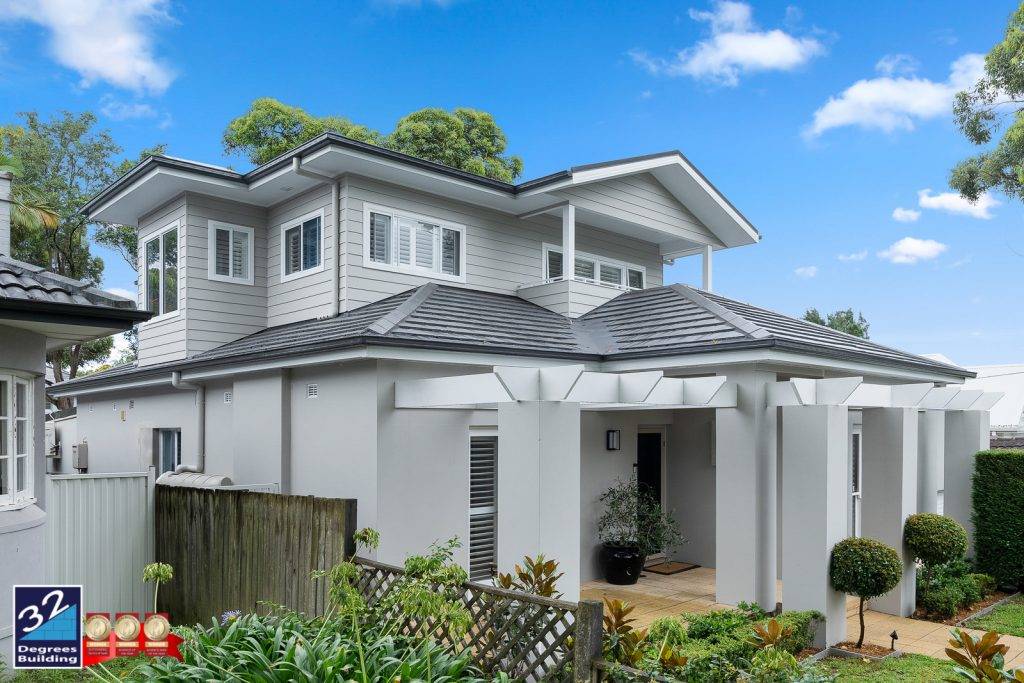
We are the experts in Second Storey Additions, Ground Floor Extensions, and Large Scale Renovations. We understand the unique challenges that these projects can present, and we have the skills and expertise to ensure that the end result is exactly what our clients envision. We are committed to delivering a stress-free and successful project from the initial consultation to the final handover.
At 32 Degrees Building, we are committed to excellence in everything we do. Our dedication to quality workmanship, attention to detail, and exceptional customer service set us apart from our competitors. Whether you want to add a second storey to your home, extend your ground floor, or undertake a large-scale renovation project, we are the team you can trust.
If you’re looking for a reliable and trusted builder for your next Second Storey Addition, Ground Floor Extension, or Large Scale Renovation project, look no further than 32 Degrees Building. Our well-run operations, capable management team, and solid financial strength make us the perfect choice for your project. Contact us today to learn more about our services and how we can help you achieve your building goals.
How to make your home energy efficient
Adding a second storey or ground floor extension to your home is a great way to accommodate for a growing family or to create additional living space.
Are you considering a second storey addition or ground floor extension to your home, but concerned about the impact it could have on your energy consumption? Fortunately, with today’s technology and design practices, creating an energy-efficient home is easier than ever before. In this blog post, we’ll explore some ways to make your home addition both eco-friendly and cost-effective.
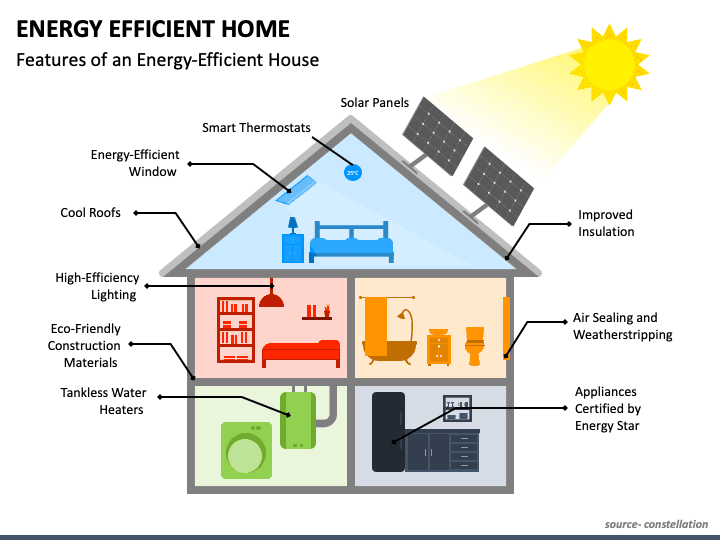
Heating and Cooling
For heating and cooling, the first thing you can do is choose a system that works with your specific needs. Options include split-system air conditioners, wall-mounted heating, and cooling units or ceiling fans. Consider natural gas, electric, solar power or hydronic heating to reduce your heating and cooling bills over time. Another way to reduce energy consumption is by using insulation, which will help to keep your home warm in the winter and cool in the summer. You can also install double-glazed or Low-E glazed windows to help prevent heat loss during colder months.
Hot Water Systems
Your hot water system is another major contributor to energy usage. Consider installing a solar hot water system to lower energy bills and reduce your carbon footprint. This system works by using solar panels to heat your water, which can then be stored in a tank for later use. An electric heat pump system is also a good option.
Lighting
Choosing the right lighting for your home will provide energy savings long-term. LED lights use far less energy and last longer than traditional halogens. They are also safe, reliable and can be used both indoors and outdoors.
Appliances and Technology
Many appliances and devices in our homes use significant amounts of electricity. Choosing energy-efficient options when shopping for new appliances like a fridge, dishwasher, washing machine or air-conditioner is a great way to reduce power usage. Even switching off appliances when not in use can make a significant difference to your energy bill.
Connected Home
A connected home is a smart home that uses technology to manage energy use. For example, you can connect your heating and cooling systems to a smart thermostat, allowing you to automate your home’s temperature settings. This means your home will always be at the perfect temperature and energy will be used efficiently as the system will learn your preferences.
Solar Panel/Photovoltaic Systems
A photovoltaic system is a type of solar panel that generates electricity when sunlight hits the panels. Once installed, you can power your home using energy from the sun, saving you money on electricity bills and reducing your environmental impact.
Batteries
Batteries are a great way to store excess energy and utilise it when needed, making your home entirely self-sufficient. Battery options like Tesla’s Powerwall allow you to store electricity generated by solar panels throughout the day for use at night when electricity prices are higher.
Rainwater
Incorporating a rainwater tank into your second storey addition or ground floor extension is an excellent way to increase your home’s energy efficiency. Instead of letting stormwater run off your roof, a rainwater tank can collect this water and store it for later use, reducing your reliance on mains water. You can then use this water for watering the garden or flushing toilets, saving you money on expensive water bills. In addition to its practical uses, using rainwater tanks is an eco-friendly solution that reduces your home’s environmental impact, making it a worthwhile investment in the long run.
Let us help you build an energy efficient Addition or Extension
Making your Second Storey Addition or Ground Floor Extension energy efficient can help reduce your environmental impact and save you money on energy bills. With a range of options available, from insulation and efficient lighting to renewable energy systems, there’s never been a better time to create an eco-friendly home addition or extension. No matter what your budget or needs, there are measures you can take to create a home that is sustainable, comfortable and cost-effective.
At 32 Degrees Building, we can help you along the journey toward an energy-efficient home addition or extension.
Feel free to contact us to learn more!
How do I know if my home has been built properly?
At the front of mind for the majority of homeowners entering into any building project, is the question of how to know whether the works they have started have been built with care, are within specifications and comply with the rules and regulations and have ultimately been built properly.
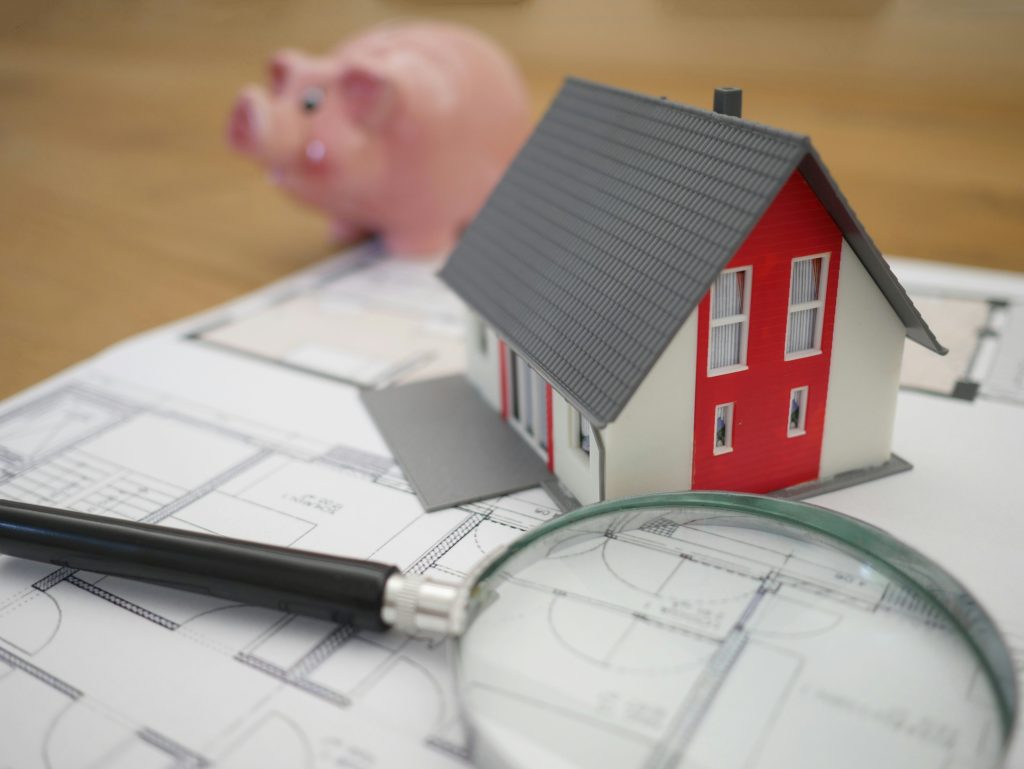
It is important to understand the process, stages, checks and requirements each build goes through and we’ve put together some information to help explain the process and the different stakeholders involved and their key role in your build;
These can be broken down as follows:
- Principal Certifying Authority (PCA);
- Engineer;
- Builder;
- Quality Assurance Program;
- Certificates;
- Defect Period.
- Statutory Warranty Period
Principal Certifying Authority (PCA)
A Principal Certifier is engaged to carry out mandatory inspections associated with a build during the construction process. They are there to ensure the structure is completed in accordance with the approved consent (DA/CC or CDC), as well as to check compliance with the Building Code of Australia (BCA) requirements
Generally for a second storey addition, the mandatory inspections that the Certifier will undertake during the build may look like this:
– After excavation for and prior to the placement of any footings
– Prior to pouring any in-situ reinforced concrete building element
– Prior to covering of the framework for any floor, wall, roof, or other building element
– Prior to covering waterproofing in any wet areas
– Prior to covering any stormwater drainage connections
– After the building work has been completed & prior to any Occupation Certificate being issued in relation to the building
Upon completion of mandatory inspections, completion of all works associated with the approval and final documents/certificates provided, an Occupation Certificate will be issued.
Engineer
A structural design plan is generally prepared by registered professional engineers, and, are based on information provided by the architectural drawings. They provide details for how a building or other structure will be built.
It is not uncommon for engineering revisions to occur during the build following onsite inspections by the engineer and consultation with the project manager. The engineer is there to confirm that the structure has been built in accordance with his plans and certifies the overall structural adequacy of the build. This certificate is provided to the Certifier.
Inspections undertaken by engineers may look like this;
– Prior to pouring any in-situ reinforced concrete building element
– Prior to covering of the framework for any floor, wall, roof, or other building element
– Prior to covering any stormwater drainage connections (if required – based upon the hydraulic design)
Builder
The role of the builder is to interpret the architectural drawings, structural drawings, surveys plan and all approved documentation and construct the building in accordance with these. The builder will then coordinate, schedule and oversee the multiple skilled trades to undertake each component of the build and then liaise and coordinate the inspections with the engineer and certifier during the build at critical stages to confirm compliance with the BCA and that the build is structurally sound.
There are multiple trades, suppliers and deliveries to be managed by your builder during a build. To name a few of the trades that would work on your home; carpenters, plasterers, concreters, brick layers, plumbers, welders, electricians, waterproofers, roofers, tilers, labourers, cabinet makers, showerscreen installers, glaziers, staircase installers, painters, flooring installers, insulation installers, asbestos removalists, air conditioning installers, renderers.
Your builder should be able to provide you with a copy of the timeline of your build but don’t be alarmed if dates change during your build with certain items – this is normal, given the multiple trades and deliveries happening! As long as your builder is within your contract period, you only need to focus on your finish date and ensuring that any materials you have to supply are onsite by the date communicated to you. Should you have any concerns with your finish date being on track, just reach out to your builder and their team for clarification. They are there to help.
Quality Assurance Program
As you can see the roles of the builder, engineer and Certifier do a lot to ensure your build is completed in compliance with the BCA and the approved plans, sometimes, it can be easy to overlook the minor items during the build and this is where our quality assurance program steps in. As an additional check across all of our builds, we arrange for an independent building inspector to complete a progress inspection at the Lock up and Rough in stage and a final inspection pre-handover.
This is an added layer of reassurance for us and our clients to ensure you are receiving the highest quality build.
Certificates
Following Practical Completion, certificates are provided to the certifier.
These are from the individual trades to certify their work has been completed in compliance with the Australian Standards.
Certificates required but not limited to:
– Engineering structural adequacy certificate
– Waterproofing certificate for each wet area
– Insulation certificate
– Glazing certificate
– Electricians CCEW certificate
– Smoke alarm certificate
– Plumbing certificate of compliance
Defect Period
Upon completion of your build and reaching Practical Completion, you will have a 13 week minor maintenance period. This is for the builder to attend to minor defects that would have been listed during your Practical Completion walkthrough but don’t prevent you from moving into your new space.
What happens when your defect period ends?
There are statutory warranties on your build.
This means that should any issue arise with the works on your home, you may reach out to your builder and make a claim; within six years for major defects and within two years for other defects from the date of completion.
By providing photos and videos to the builder, they can then investigate and determine whether it relates to the builder/contractor’s workmanship and attend to the defect for you. Industry guidance materials like the Fair Trading Standards and Tolerances guide can assist in determining a defect.
Dispute Resolution
Open communication with your builder goes a long way to easily resolving defects without the need to take legal action. Generally, if a builder and/or the owner are concerned with defects at the home, the builder may arrange an independent inspection with an engineer or building inspector, this then allows an impartial view and you can then discuss any concerns with your builder to work with you on. Alternatively, if there is a communication breakdown, either you or the Builder can formally request for Fair Trading to assist in dispute resolution and in most cases the Inspector will arrange to meet with you and the builder on-site to inspect the work under dispute and act as a mediator and issue an order of rectification if it’s required. If your builder is no longer operating, then you can submit a claim through your Home Warranty.
Ensuring Excellence with 32 Degrees Building Quality Assurance Program
At 32 Degrees Building, we are committed to delivering exceptional quality and impeccable finishes for your construction projects. Our 32 Degrees Building Quality Assurance Program is designed to ensure that your build meets the highest standards of quality and completeness so that we can provide you with the confidence that your build has been built to code.
What is the 32 Degrees Building Quality Assurance Program?
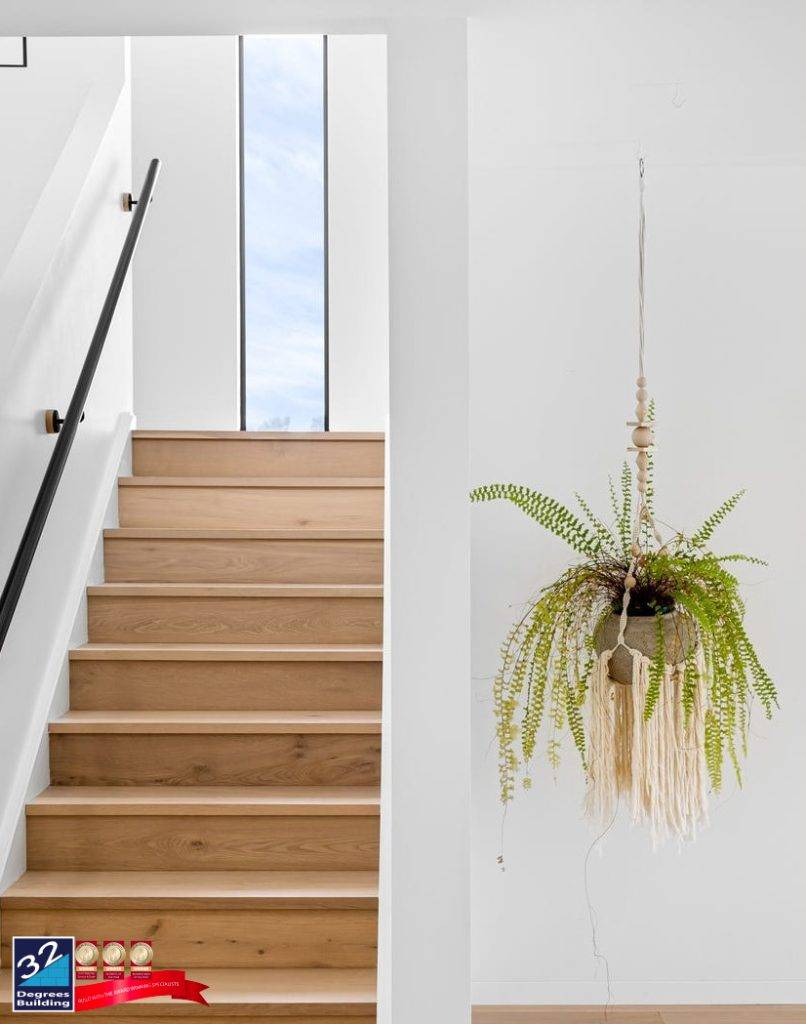
The 32 Degrees Building Quality Assurance Program is an integral part of our commitment to building excellence. This program includes a detailed progress inspection and final inspection conducted by independent building inspectors. These inspections are crucial for maintaining the highest standards throughout the construction process and ensuring that all aspects of the build are up to code and quality benchmarks.
Progress Inspection
Our progress inspection is conducted following the rough in stages of the construction process. These inspections are designed to catch any potential issues early and ensure that the build is proceeding correctly.
Key Areas of Focus:
- Frames: Inspecting the structural integrity of the frames to ensure they meet design specifications.
- Cavity Drainage & Flashings: Checking that drainage systems and flashings are properly installed to prevent moisture issues.
- Rough-In Stage: Assessing the preliminary installation of electrical, plumbing, and HVAC systems before the plasterboard is installed.
Final Inspection
The final inspection is conducted just before the handover and the sign-off of practical completion. This comprehensive inspection ensures that every aspect of your new build is finished to the highest standards.
Key Areas of Focus:
- Internal Areas: Evaluating the quality and finish of all interior spaces, including walls, ceilings, floors, and fixtures.
- External Areas: Assessing the exterior finishes, including cladding, roofing and gutters
Detailed Reporting and Certification
Both the progress and final inspections culminate in a detailed reports that may highlight any defects or areas requiring attention. These reports are crucial for ensuring that any issues are addressed promptly and that the build meets our stringent quality standards.
Certification:
Upon the successful completion of the Progress Inspection and Final Inspection, a Certificate of Quality Assurance is issued. This certificate is your assurance that all quality requirements have been met, and your new build is ready for handover in perfect condition.
Integration with Other Inspections
Our Quality Assurance Program is conducted in addition to the principal certifying authority (PCA) inspections and engineering inspections. This holistic approach ensures that your build is not only compliant with all regulatory requirements but also meets our rigorous quality benchmarks.
Conclusion
At 32 Degrees Building, our Quality Assurance Program is a testament to our dedication to delivering the highest quality builds. By incorporating thorough progress and final inspections, we ensure that every project meets our exacting standards. Trust us to provide you with a home that is not only beautiful but also built to last.
Why You Need to Vacate When Adding a Second Storey to Your House with 32 Degrees Building
When you’re planning on adding a second storey to your house with 32 Degrees Building, it’s essential that you vacate the premises for a minimum of two weeks. Here’s why:
When you’re planning on adding a second storey to your house with 32 Degrees Building, it’s essential that you vacate the premises for a minimum of two weeks. Here’s why:
Ensuring Your Safety and Comfort
Your safety and comfort are our top priorities. During the initial stages of the build, significant work such as demolition, electrical adjustments, and preparation are undertaken. These tasks can generate considerable noise, dust, and disruption, making your home an uncomfortable place to stay. By vacating for at least two weeks, your family can avoid these inconveniences and ensure a more pleasant living environment.
Protecting Our Team’s Safety
When we add a second storey, we deal with an existing dwelling’s structural and electrical systems. To ensure the safety of our team, we need to disconnect the power to the entire home for a two-week period. This precaution helps minimise any risks associated with live electrical work and structural changes, keeping both our workers and your family safe.
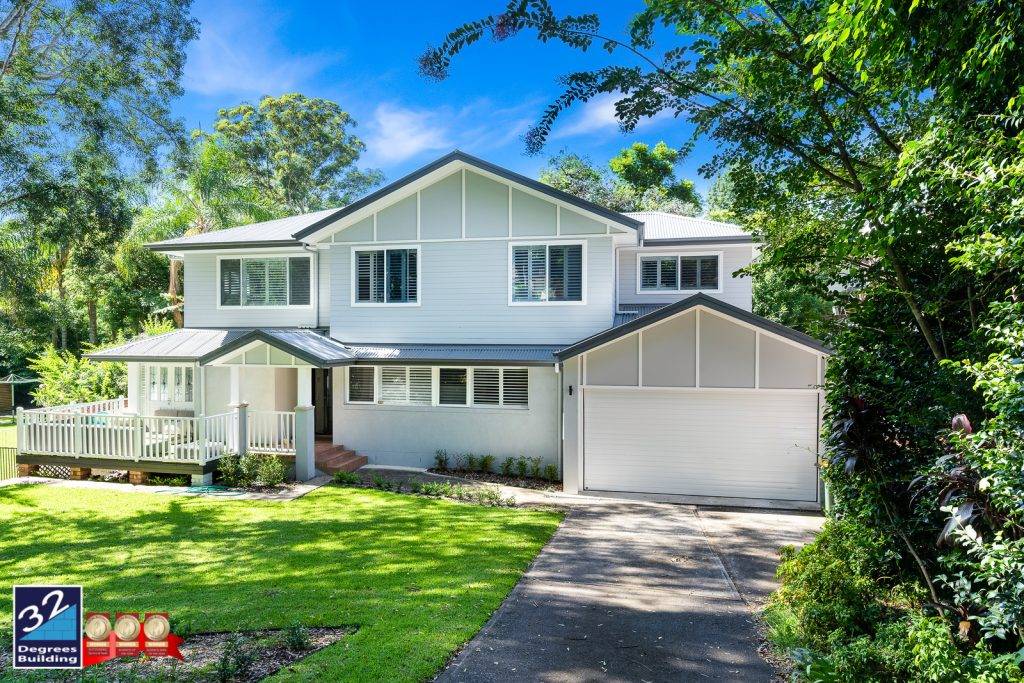
A Seamless and Enjoyable Building Experience
Our goal is to make the process of adding an addition as smooth and enjoyable as possible. With our extensive experience in building second storeys and extensions, we’ve learned what strategies work best. Prioritising your family’s safety and comfort, we carefully structure our builds to provide you with the best possible experience.
Take A Holiday On Us
Nobody wants to live through construction. Take a holiday while we build.
We invite you to take a holiday on us at the start of your build. Let us take over whilst you relax. Think about how amazing a couple of weeks break will be when we kick off the addition or extension of your dreams.
We want you to take some time off, kick back and enjoy some relaxation and recuperation that we know you truly deserve. Celebrate your new addition or extension with a holiday courtesy of 32 Degrees Building.
Go ahead with any addition or extension valued over $200K, and for a limited time only, we will cover the costs of your holiday, terms apply*
*Terms and Conditions: Cannot be used in conjunction with any other offer. Upon payment of the 10% deposit towards your HIA fixed-price contract, we will provide you with a $3,000.00 Flight Centre Voucher or give you a $3,000.00 holiday cashback into a nominated bank account. A condition of our building contract is that you vacate the premises for a minimum of two weeks while power is cut to the home and the build commences. During this time we invite you to take a much-needed break and take a holiday on us. This promotion is valid for anyone who signs a preliminary agreement with us from 1 April 2022 till 30 June 2022. Building must commence within 6 months of the preliminary agreement being signed.
What we are doing to combat the state of the construction industry landscape
Alongside a house price boom, Australia is in the midst of a homebuilding boom with the Housing Industry of Australia expecting that a near-record number of new homes will be built over the next 12 months.
But for many in the residential construction sector, it’s a profitless boom – and several major players have recently gone bust, with the assumption that more will follow.
Why are construction companies folding?
A perfect storm of factors has been brewing for the better part of 2021, and now the rainy season has arrived.
Supply chain issues, with a shortage of building materials worldwide resulting from COVID-19 disruptions, coupled with natural disasters from freak storms and flooding to bushfires, have provided significant pressure on builders.
Those shortages have led to prices rising exponentially, particularly for timber and steel.
On top of that, a labour shortage is making it difficult to find tradespeople, giving workers the power to command huge wages.
So, the overall cost of construction has been pushed up significantly.

A number of major builders have gone bust in recent months despite a home construction boom. Picture: Getty Images
Adding to this is the lengthy delays in actually getting the materials, which has led to some homes taking more than 12 months to be built, further adding to building companies’ costs.
With the majority of builders signing fixed-price contracts with buyers, and the margin for escalating costs being inadequate, many are losing money on every single project.
It’s a big problem in exceptional circumstances like we’re seeing at the moment, said Russ Stephens, co-founder of the Association of Professional Builders.
“The average cost of a contract for a builder has gone up between 15% to 20% over the past six or seven months alone – and up to as much as 50% in some areas,” Mr Stephens said.

Australia is in the midst of a residential construction boom, with a near-record number of new homes to be built in the next year. Picture: Getty Images
What we are doing to combat the state of the construction industry landscape
32 Degrees Building has been operating for over 11+ years, and we know and understand how to manage our business in turbulent times.
We have been working with our team and talking directly to our suppliers to manage and understand any upcoming supply challenges and supply chain issues. We have been working with our timber suppliers closely to understand their difficulties in obtaining overseas supply and then managing, monitoring and forecasting for our current and future builds. Skills shortage for us isn’t an issue, we have worked very hard to set our business apart from the rest. Our team are employed with us and this enables us to closely manage and develop their practical skills with us over the course of their apprenticeship and retain them into tradespeople and leadership roles – we now employ over 40 team members and continue to grow. By employing our team members, we manage our labour costs. This strategic approach we have applied to our business has allowed us to manage our costs and your build providing you with the security and confidence that we are here to stay.
Our business is always looking forward and planning for the future. We forecast 6 months, 12 months, and 18 months ahead to ensure we can stay one step ahead of any market issues and trends.
With the above in mind, we have a strong business model and capable management team in place to ensure that the best outcomes for our clients and the business are always achieved.
What you can do to prepare your home for a severe weather event?
Australia has recently experienced some severe weather conditions including high winds and heavy rainfall. These weather events and other similar events that have occurred in recent years, can at times be so severe that they exceed the Building Code of Australia (BCA) design benchmarks for homes constructed within Australia.
In such extreme weather conditions rainwater can be forced through closed windows and sprayed up rooves in a manner which homes aren’t designed for and therefore water may enter some homes. The resulting water ingress may cause damage to your home, often this damage may only be of a minor nature, but can still cause considerable stress to you as the homeowner.
What can you do to prepare your home for a severe weather event?
As part of your ongoing home maintenance we recommend the following check measures are undertaken to avoid any water ingress to your home;
- Check all gutters and downpipes are clear of debris, leaves etc…
- Regularly check your roof for signs of slipped roof tiles, cracks and possible water ingress entry points – especially if you have recently had a contractor attend your property eg. Foxtel or solar panel installer
- Check your stormwater drains for blockages
- Check your window and door seals aren’t displaying signs of cracks and ageing
- Check for other possible entry points and seal if required
If during a severe weather event you do get water ingress – who do you call?
- If it is an emergency please call the SES for immediate assistance
- In most other cases, do what you can to stop/reduce the incoming water and then contact your home insurer as the first step to understanding what you can do
When these severe weather events happen most owners contact the builder of the home to request an inspection or even rectification of the damaged parts however if this issue hasn’t occurred until now then it is likely it is due to the severe weather event and these items will be claimable under your owner’s home insurance or alternatively are maintenance issues as the homeowner for you to attend to.

Sydney is a wonderful place to live, but it can also be challenging when it comes to living arrangements. As property prices continue to soar, many families are finding it difficult to find affordable homes that fit their needs. Multi-generational families living together has become more common, particularly around the inner city suburbs, where there is a high demand for living space. However, with the increase in demand comes an equally high cost, which means that many families are turning to alternative solutions like home renovations, particularly second storey additions.
Adding a second storey addition to your home is more than just a way to gain extra living space; it’s an investment in your future. Many people assume that purchasing another property is a better investment, but this is not always the case. When you take into account the cost of purchasing and maintaining another property, along with the legal fees and taxes associated with buying and selling properties, the investment may not be worth it.
On the other hand, building a second storey addition is a better financial decision that has many benefits. Firstly, building a second storey addition on your home adds significant value to your existing property. Secondly, your home will have more space to accommodate your entire family, giving everyone room to spread out and enjoy different aspects of the house. Multi-generational living is becoming more acceptable and popular, particularly in the larger cities where real estate prices remain high, and families want to stay close to each other.
As a homeowner, choosing to build a second storey addition gives you the flexibility to create a design that suits your needs. Whether you need an additional bedroom, a home office, or a second lounge area, you can work with a professional builder who can create a custom design according to your requirements. With a bespoke design, you can ensure that your new space will be both functional and aesthetically pleasing.
Another advantage of building a second storey addition is that it is less disruptive than moving. Moving your entire family to a new home can be challenging and expensive, particularly when you consider the cost of moving fees, furniture removals, and utility connections. Building a second storey addition, on the other hand, requires minimal disruption to your lifestyle. You can continue to live in your home throughout the building process, ensuring that your children can maintain their routines and attend their regular schools.
Multi-generational families living together in Sydney are a growing trend, and building a second storey addition on your existing home is an excellent investment option. It’s cheaper than buying another property, gives you extra living space, adds value to your home and allows your family to stay close to each other.
If you are considering building a second storey addition for your multi-generational family, it is important to work with a reputable company like 32 Degrees Building. We have a proven track record of delivering high-quality, customised solutions for families in Sydney, and can help you achieve your goals while staying within your budget. With their expertise and experience, you can create a beautiful and functional home that supports your family’s unique needs.